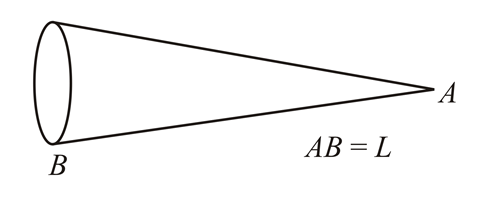Q.
A cone made of insulating material has a total charge $Q$ spread uniformly over its sloping surface having a slant length $L$ . The energy required to take a test charge $q$ from infinity to apex $A$ of the cone will be

NTA AbhyasNTA Abhyas 2022
Solution:
